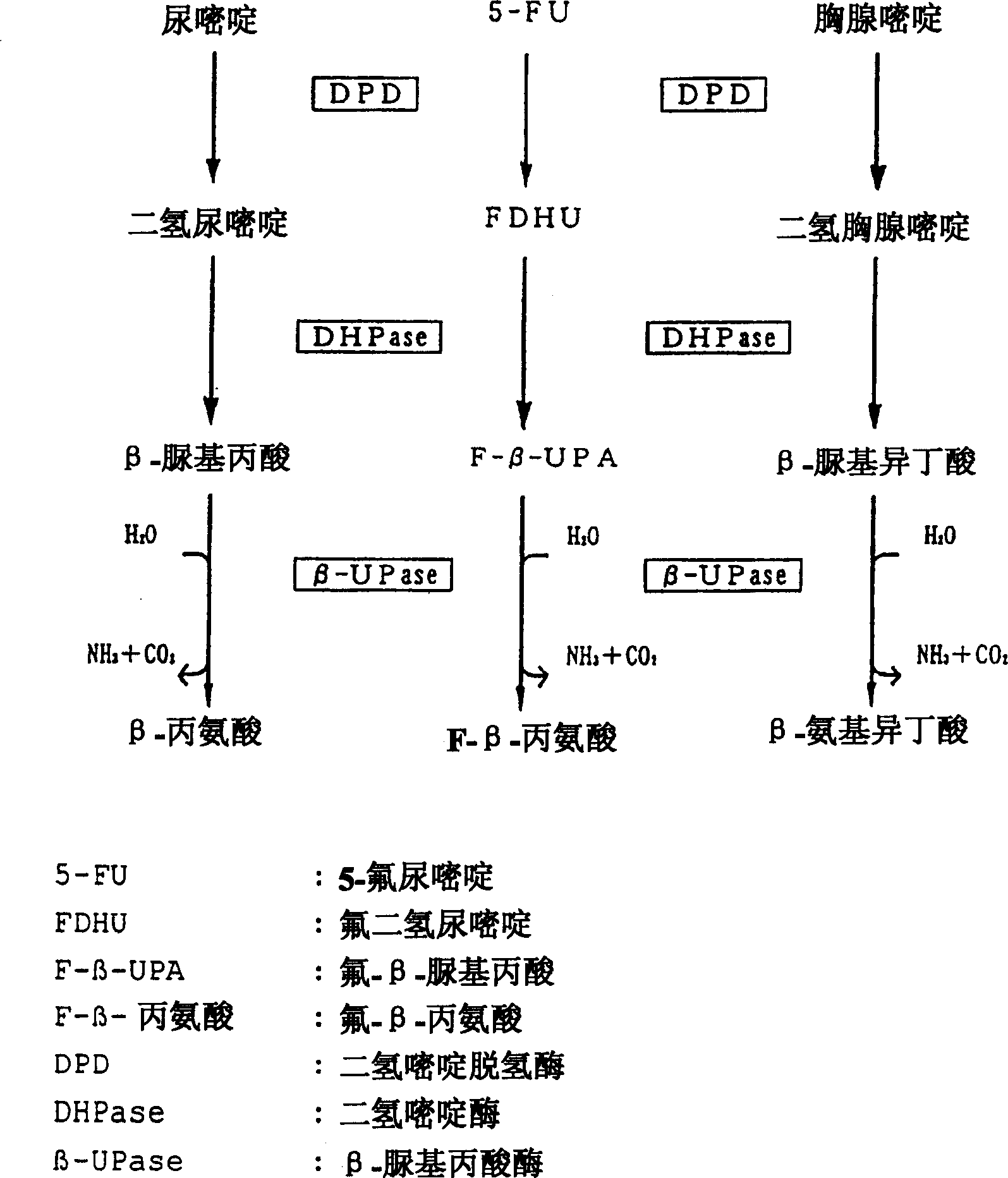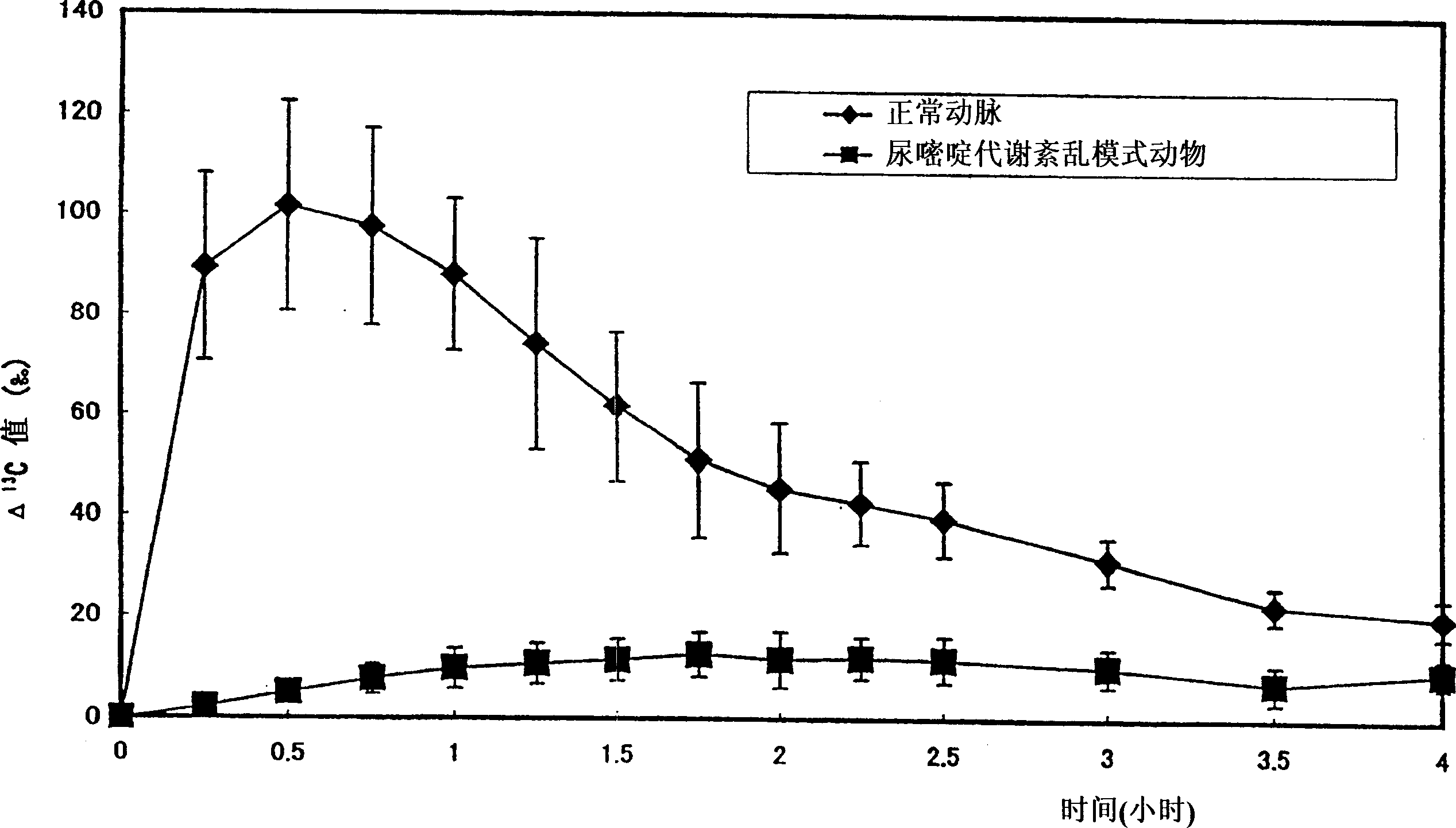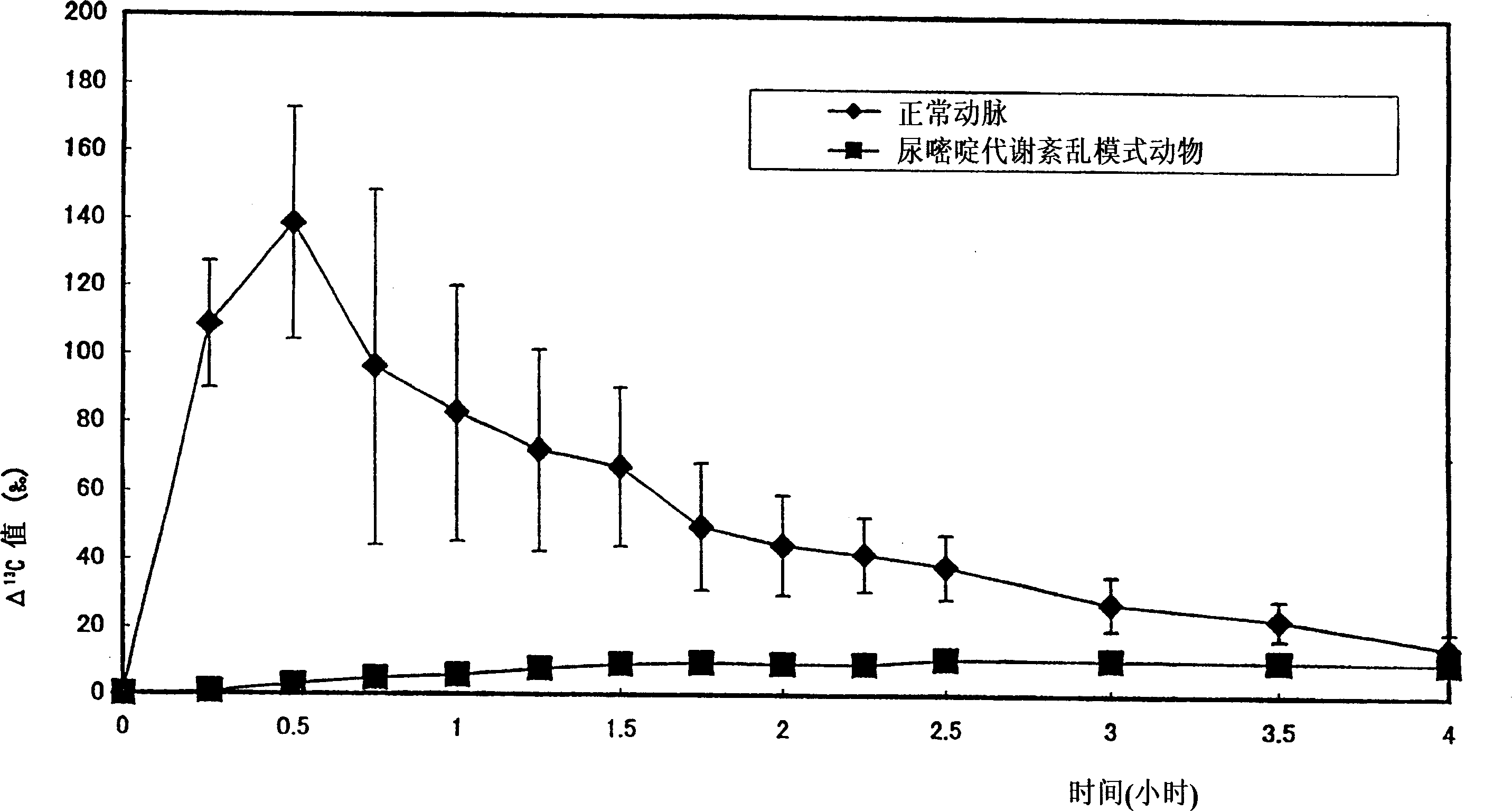Agents for measuring pyrimidine metabolizability
A technology of metabolic ability and pyrimidine, which is applied in the field of preparations, can solve problems such as unexplained, decreased DPD activity, and difficulty in evaluating whether DPD activity exists or not.
- Summary
- Abstract
- Description
- Claims
- Application Information
AI Technical Summary
Problems solved by technology
Method used
Image
Examples
Embodiment 1
[0133] in the 2nd place is 13 C-labeled carbon atom of uracil (2- 13 C-labeled uracil) was used as the isotope-labeled pyrimidine compound. Preparation of a preparation containing 2- 13 C-labeled uracil is used as the active ingredient in the form of an intravenous solution for determination of pyrimidine metabolizing capacity.
[0134] (1) Production of preparations for determination of pyrimidine metabolism capacity
[0135] Uracil-2- 13 C (Cambridge Isotope Laboratory) (300 mg) was dissolved in 24 ml of 0.1N NaOH / saline solution (measured from 200 ml of 0.1N NaOH / saline solution, which was diluted with normal saline to 2 ml of 10N NaOH / saline solution), the preparation for determination of pyrimidine metabolizing capacity was obtained in the form of intravenous injection, in (each 4 ml injection contains 50 mg uracil-2- 13 C).
[0136] (2) Preparation of (E)-5-(2-bromovinyl)-uracil preparation
[0137](E)-5-(2-Bromovinyl)-uracil is known to be an inhibitor of dihyd...
Embodiment 2
[0143] The preparation for determining pyrimidine metabolizing ability was prepared in oral form, using the same 2- 13 C-labeled uracil was used as the active ingredient and its detection was useful for determining pyrimidine metabolizing capacity.
[0144] (1) Preparation of preparations for determination of pyrimidine metabolism capacity
[0145] 2- 13 C-labeled uracil (Cambridge Isotope Laboratory) (300 mg) was dissolved in 24 ml of 0.1N NaOH / saline solution (measured from 200 ml of 0.1N NaOH / saline solution, which was diluted with normal saline 2 ml of 10N NaOH / brine solution). Water was then added to obtain in oral form 60 ml of a preparation of determined pyrimidine metabolizing capacity (per 10 ml of oral solution containing 50 mg of 2- 13 C-labeled uracil).
[0146] (2) experiment
[0147] Fasted beagle dogs were used as experimental animals. In group 1 (n=3), the preparation prepared above for determining pyrimidine metabolizing ability was orally administered (...
Embodiment 3
[0151] 56.5 mg, 113.1 mg, 226.2 mg and 452.3 mg of 2- 13 C-labeled uracil (Cambridge Isotope Laboratory) to prepare solutions with concentrations of 10 μmol / ml, 20 μmol / ml, 40 μmol / ml and 80 μmol / ml. These solutions were forcibly administered orally to fasting male Beagle dogs (n=3) using oral test tubes for dogs at a dose of 1 ml / kg body weight (doses: 10, 20, 40 and 80 μmol / kg), after which water was administered in 2 ml Amounts per kg body weight are administered orally to dogs compulsorily. Exhaled air was collected before administration and at 15, 30, 45, 60, 75, 90, 105, 120, 135, 150, 180, 210, and 240 minutes after administration. 13 C labeled CO 2 concentration, and pharmacokinetic parameters (area under the curve (AUC) and maximum 13 C labeled CO 2 Concentration (Cmax)) obtained from exhaled 13 C labeled CO 2 Calculated from the concentration transition curve.
[0152] Figure 4 shown exhaling 13 C labeled CO 2 Concentration transition curve. Figure 5 and...
PUM
 Login to View More
Login to View More Abstract
Description
Claims
Application Information
 Login to View More
Login to View More - R&D
- Intellectual Property
- Life Sciences
- Materials
- Tech Scout
- Unparalleled Data Quality
- Higher Quality Content
- 60% Fewer Hallucinations
Browse by: Latest US Patents, China's latest patents, Technical Efficacy Thesaurus, Application Domain, Technology Topic, Popular Technical Reports.
© 2025 PatSnap. All rights reserved.Legal|Privacy policy|Modern Slavery Act Transparency Statement|Sitemap|About US| Contact US: help@patsnap.com



